Chatbot vs Virtual Agent The Future of Customer Experience

AI is changing how you interact with businesses. From answering questions instantly to offering personalized solutions, it's reshaping customer experiences like never before. Did you know that by 2025, 95% of customer interactions will involve AI? That’s huge! Companies are already seeing benefits, like a 30% reduction in call handling time and a 25% boost in customer satisfaction.
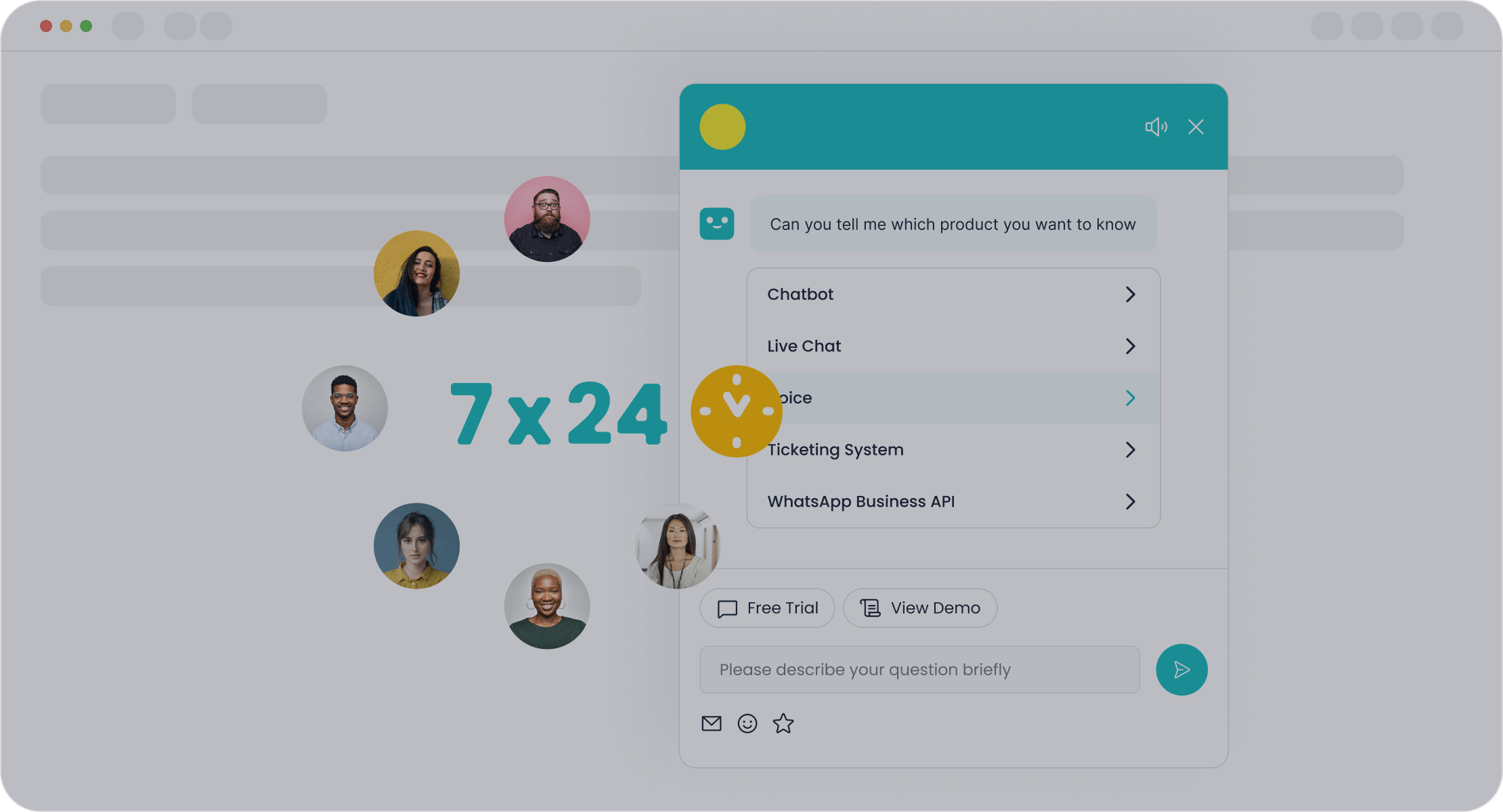
But here's the big question: what’s the difference between a chatbot vs virtual agent? And how do they shape the future of customer experience? Understanding these tools helps you choose smarter solutions to improve customer satisfaction and streamline operations. Sobot’s AI-powered chatbot, for example, is a great illustration of how businesses can boost efficiency while keeping customers happy.
Understanding Chatbot vs Virtual Agent
What is a Chatbot? Features and Capabilities
A chatbot is like your digital assistant for simple tasks. It’s a software application designed to simulate human conversation, often through text or voice. You’ve probably interacted with one when asking for store hours or tracking a package. Chatbots are great at handling straightforward queries and providing quick answers.
Here’s what makes chatbots stand out:
- Scripted Conversations: They follow pre-set scripts to guide interactions. For example, if you ask, “What’s your return policy?” the chatbot pulls the answer from its database.
- Efficiency: Chatbots can automate up to 30% of tasks in customer service, saving businesses billions annually.
- 24/7 Availability: They’re always online, ready to assist, even when human agents aren’t available.

- Multilingual Support: Many chatbots, like Sobot’s AI Chatbot, can communicate in multiple languages, making them ideal for global businesses.
- Cost-Effective: They’re perfect for repetitive tasks, reducing the need for large customer service teams.
The chatbot market is booming, with an annual growth rate of 23.3%. By 2028, it’s expected to reach $15.5 billion. This growth shows how businesses are embracing AI chatbots to improve efficiency and customer satisfaction.
What is a Virtual Agent? Features and Capabilities
A virtual agent takes things up a notch. Think of it as a chatbot’s smarter sibling. It uses advanced AI to understand context, emotions, and even intent. Virtual agents don’t just answer questions—they solve problems.
Here’s what makes virtual agents unique:
- Personalized Interactions: They analyze customer data to provide tailored responses. For instance, if you’re a frequent shopper, a virtual agent might recommend products based on your past purchases.
- Complex Query Handling: Unlike basic chatbots, virtual agents can tackle intricate issues, like troubleshooting a technical problem.
- Voice and Text Support: They can handle both written and spoken conversations, making interactions feel more natural.
- Learning and Adapting: Virtual agents improve over time by learning from customer interactions.
- Integration with Systems: They work seamlessly with existing business platforms, ensuring a unified experience.
Virtual agents are game-changers for industries like banking and healthcare. They offer real-time assistance, enhance data collection, and ensure compliance with privacy standards. For example, Sobot’s AI solutions integrate virtual agents with human agents, creating a seamless support system.
Key Differences Between Chatbots and Virtual Agents
While chatbots and virtual agents share similarities, their capabilities set them apart. Here’s a quick comparison:
| Feature | Chatbots | Virtual Agents |
|---|---|---|
| Complexity | Simple, scripted conversations | Advanced, context-aware interactions |
| Learning Ability | No learning or adaptation | Learns and improves over time |
| Query Handling | Basic, repetitive tasks | Complex, multi-step problem-solving |
| Integration | Limited integration | Seamless integration with systems |
| Personalization | Minimal | Highly personalized responses |
Virtual agents excel in understanding human language and intent. They can even partner with human agents to enhance performance. Chatbots, on the other hand, are ideal for quick, straightforward tasks. Both play crucial roles in shaping the future of customer experience.
Tip: If you’re looking for a solution that balances cost and efficiency, start with a chatbot. For more advanced needs, consider a virtual agent.
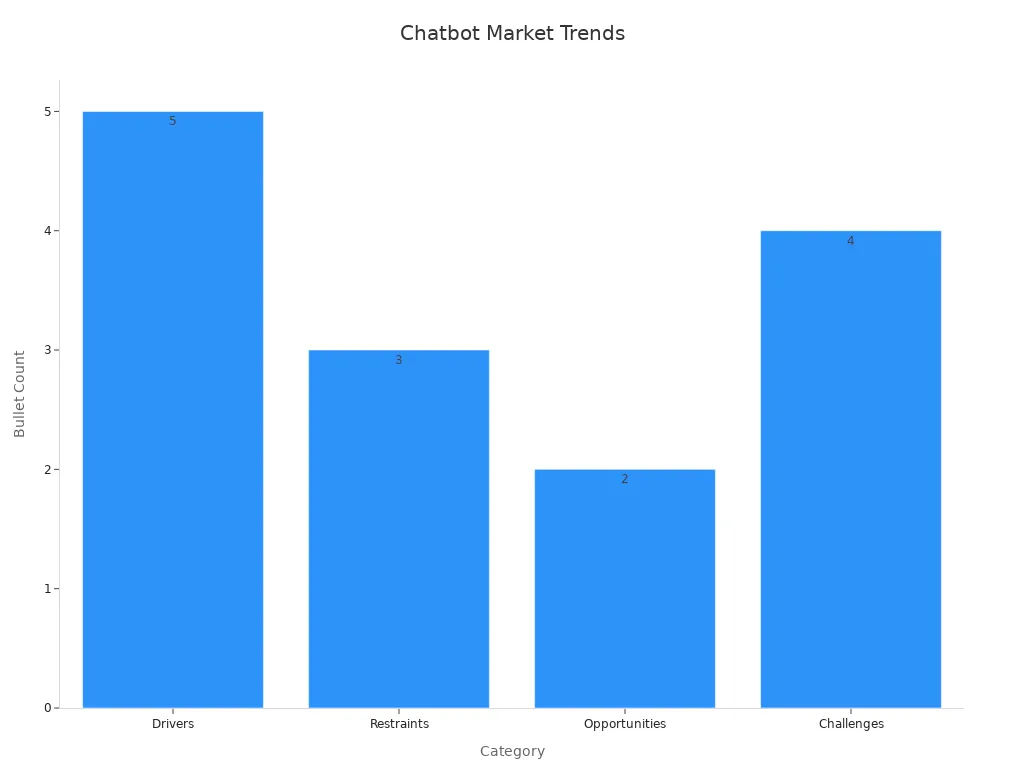
The Role of Chatbots in Enhancing Customer Experience
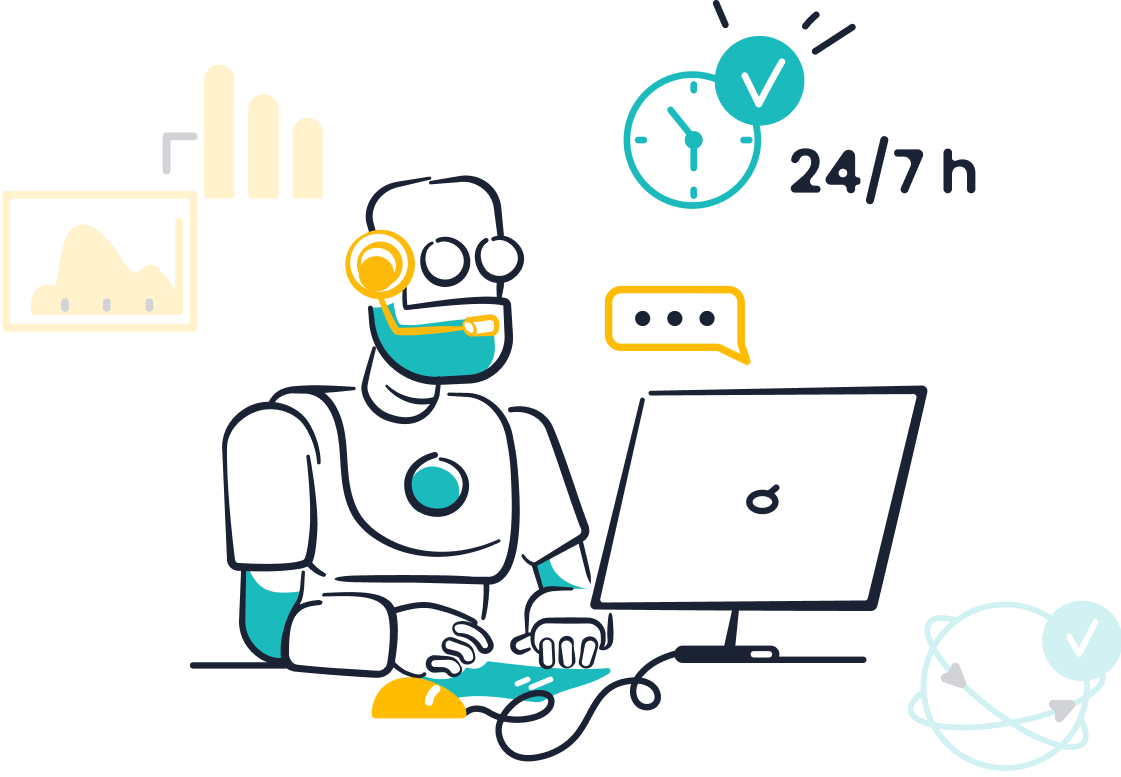
How Sobot AI Chatbot Improves Efficiency and Reduces Costs
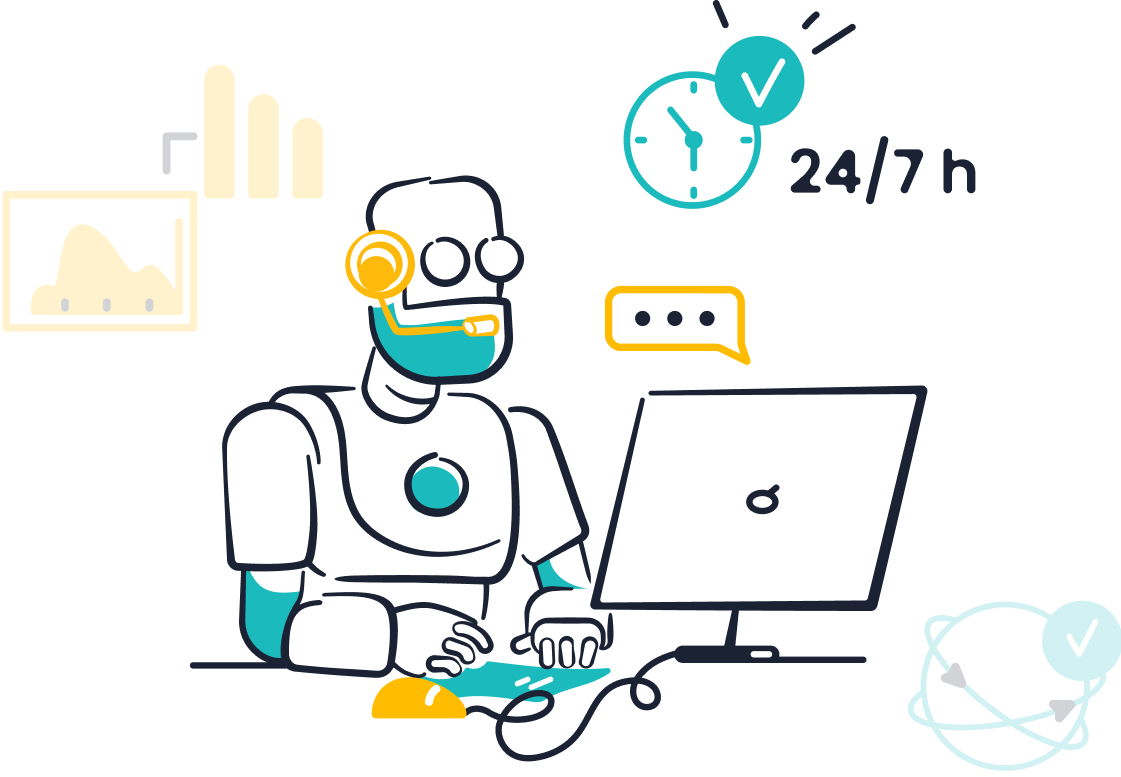
Imagine having a tool that works tirelessly around the clock, handling repetitive tasks and saving your team valuable time. That’s exactly what chatbots do, and Sobot’s AI-powered chatbot takes it to the next level. By automating up to 70% of routine queries, it frees up your human agents to focus on more complex issues. This not only boosts productivity but also slashes operational costs by up to 50%.
Here’s how chatbots like Sobot’s make a difference:
- Cost Savings Across Industries: Businesses worldwide are seeing significant savings. For instance, the health insurance sector saved $22 million by reducing human support by 60%. Similarly, companies like Lyft reported an 87% reduction in resolution times, enhancing customer satisfaction.
- Real-World Success Stories: Delta Airlines uses chatbots to streamline flight information and check-in processes, cutting waiting times. Spotify’s chatbot helps users manage playlists and subscriptions, improving customer engagement and loyalty.
Sobot’s chatbot doesn’t just stop at efficiency. It also integrates seamlessly with your existing systems, ensuring a smooth workflow. Whether you’re in retail, healthcare, or e-commerce, this AI-driven chatbot is a game-changer for reducing costs while improving the overall customer experience.
24/7 Availability and Multilingual Support
Your customers don’t follow a 9-to-5 schedule, and neither should your support system. Chatbots excel at being available 24/7, ensuring no query goes unanswered, even during holidays or peak hours. Sobot’s AI chatbots take this a step further with multilingual capabilities, allowing you to connect with customers in their preferred language.
Why does this matter? Let’s break it down:
- Global Reach: Multilingual chatbots help you cater to diverse audiences, breaking language barriers and enhancing customer engagement.
- Performance Metrics: Chatbots track key metrics like resolution rates and customer satisfaction scores across languages. This ensures consistent service quality, no matter where your customers are.
- Efficiency Gains: By resolving queries instantly, chatbots save time for both customers and support staff.
For example, Sobot’s chatbot supports multiple languages and operates across platforms like WhatsApp and SMS. This omnichannel approach ensures your customers always have a way to reach you, boosting their trust and loyalty.
Boosting Conversions Through Smart Self-Service
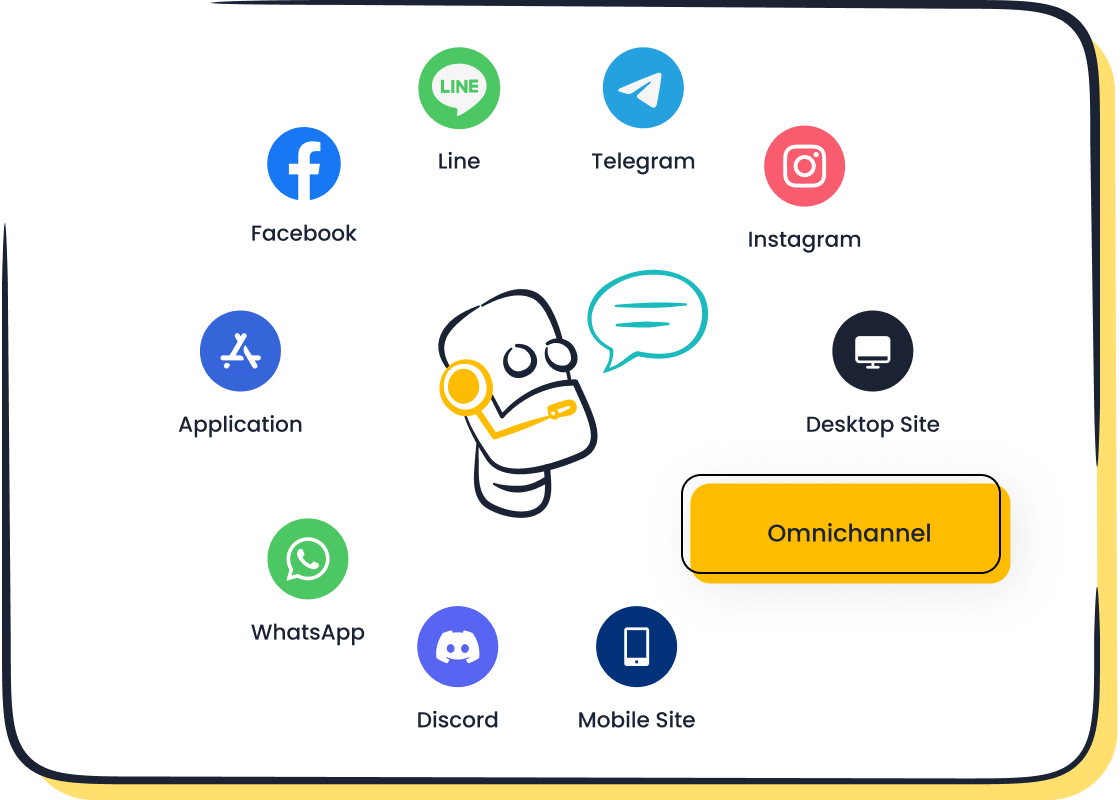
Did you know that chatbots can increase conversions by up to 20%? Sobot’s AI chatbots achieve this through smart self-service features. They guide customers through their journey, from answering product questions to assisting with purchases, all without human intervention.
Here’s how they do it:
- Proactive Engagement: Chatbots send personalized messages based on user behavior, nudging them toward completing a purchase.
- Real-Time Assistance: They provide instant answers to questions like “Is this product in stock?” or “What’s the shipping cost?” This reduces cart abandonment and keeps customers moving forward.
- Data-Driven Insights: By analyzing customer interactions, chatbots identify pain points and suggest improvements to your sales funnel.
Sobot’s chatbot is designed to convert browsers into buyers. Its ability to handle high volumes of inquiries during peak times ensures no opportunity is missed. Whether it’s recommending products or offering discounts, this AI-powered solution drives sales while keeping customers happy.
The Role of Virtual Agents in Transforming Customer Experiences
Delivering Personalized and Context-Aware Interactions
Virtual agents are redefining how businesses connect with customers by offering personalized interactions that feel human. Unlike chatbots, virtual agents analyze past customer interactions and preferences to deliver tailored responses. For instance, if you frequently shop for electronics, a virtual agent might recommend the latest gadgets based on your browsing history. This level of personalization builds trust and keeps customers coming back.
Did you know that 91% of shoppers are more likely to buy from brands offering tailored recommendations? Virtual agents make this possible by using AI-driven personalization to understand customer needs in real time. They also excel at context-aware interactions, ensuring every conversation feels relevant and engaging. For example, if you’ve previously asked about a product’s warranty, the virtual agent remembers and follows up with related details.
Here’s a quick look at how virtual agents are transforming customer engagement:
| Statistic | Value |
|---|---|
| Customers preferring AI-powered self-service options | 81% |
| Shoppers stating AI improves their shopping experience | 74% |
| Consumers frustrated by lack of personalization in shopping | 71% |
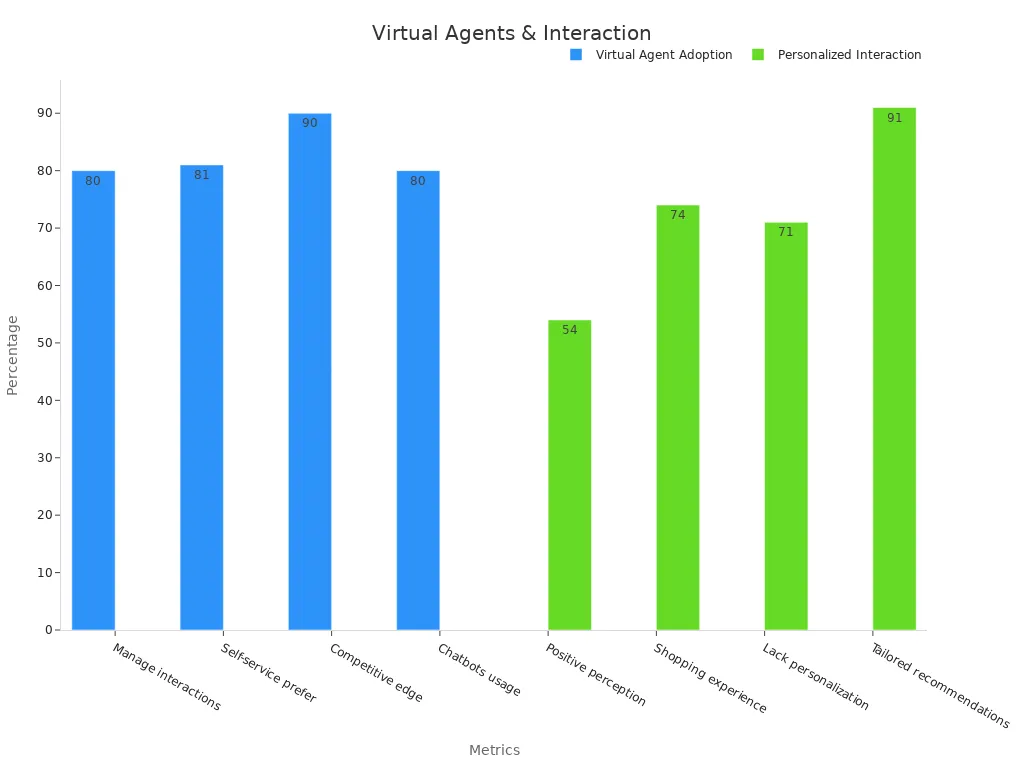
By delivering personalized experiences, virtual agents not only enhance customer satisfaction but also give your business a competitive edge.
Handling Complex Queries with Advanced AI
Virtual agents shine when it comes to tackling complex customer queries. They go beyond the capabilities of chatbots by using advanced AI to understand intent, context, and even emotions. Whether it’s troubleshooting a technical issue or guiding a customer through a multi-step process, virtual agents handle it all with ease.
For example, Sobot’s AI solutions empower virtual agents to automate routine inquiries while maintaining high customer satisfaction. They can reduce total cost per interaction by up to 70% and improve resource allocation efficiency by 40%. Plus, their scalability ensures they can handle peak-hour surges without breaking a sweat.
Here’s why virtual agents are game-changers:
- They provide 24/7 availability, ensuring immediate assistance.
- They reduce call wait times by handling multiple queries simultaneously.
- They automate ticket routing, saving time and improving efficiency.
With these capabilities, virtual agents not only solve problems faster but also free up human agents to focus on more strategic tasks.
Integrating Virtual Agents with Human Agents for Seamless Support
The best customer experiences happen when virtual agents and human agents work together. Virtual agents handle repetitive tasks and gather essential information, while human agents step in for more nuanced issues. This collaboration creates a seamless support system that keeps customers happy.
Sobot’s AI-powered virtual agents integrate effortlessly with human agents. For example, when a query requires a personal touch, the virtual agent transfers it to a human agent along with all the context. This eliminates the need for customers to repeat themselves, saving time and reducing frustration.
Here’s how this integration benefits your business:
- Improved Efficiency: Virtual agents handle routine tasks, freeing up human agents for complex issues.
- Enhanced Customer Satisfaction: Customers get quick resolutions without sacrificing the human touch.
- Streamlined Operations: Integration ensures smooth workflows and better resource utilization.
By combining the strengths of AI and human expertise, you can deliver personalized service that leaves a lasting impression.
Challenges and Considerations in Using AI for Customer Experience
Balancing Automation with Human Touch
Finding the right balance between automation and human interaction is key to delivering exceptional customer service. While AI tools like chatbots and virtual agents can handle repetitive tasks efficiently, customers often seek empathy and understanding for complex issues. You’ve probably experienced this yourself—sometimes, you just want to talk to a real person.
Many companies have successfully blended automation with human touch. For example:
- Capital One’s "Tech + Touch" strategy combines AI-powered self-service tools with human advisors for financial decisions.
- Nordstrom equips sales associates with mobile devices to enhance personalized service, letting them focus on customer interactions instead of transactions.
- Newzip achieved a 60% increase in engagement by using AI for personalization, proving that automation can strengthen human connections.
When you strike this balance, you’ll see faster response times, deeper insights, and more meaningful customer interactions. Sobot’s AI solutions make this easier by integrating virtual agents with human agents, ensuring seamless transitions for complex queries.
Ensuring Data Privacy and Security
AI for customer experience relies heavily on data, but protecting that data is non-negotiable. Customers trust you with their personal information, and any breach can damage that trust. Did you know that 40% of organizations have experienced AI-related privacy breaches? This highlights the importance of robust security measures.
Here’s what you need to know:
- 57% of global consumers view AI’s use in data collection as a privacy threat.
- 91% of organizations admit they need to reassure customers about how their data is used.
Sobot’s AI solutions prioritize security with features like GDPR compliance, data encryption, and continuous backups. These safeguards ensure your customer support system remains trustworthy while leveraging AI’s capabilities.
Overcoming Limitations of Poorly Designed Systems
Poorly designed AI systems can lead to frustrating customer experiences. Imagine asking a chatbot for help, only to receive irrelevant or incorrect responses. This happens more often than you think. For example:
| Example | Description |
|---|---|
| Air Canada | A chatbot gave incorrect refund info, leading to legal consequences. |
| Chevrolet | A chatbot agreed to sell a car for $1 due to lack of safeguards. |
| DPD | A chatbot swore at a customer, exposing vulnerabilities in prompt design. |
| NEDA | A chatbot gave harmful advice, prompting its removal from a help hotline. |
These cases show why designing AI systems with accuracy and safeguards is crucial. Sobot’s AI solutions avoid these pitfalls by using advanced algorithms and continuous optimization. With features like real-time speech recognition and LLM reasoning, Sobot ensures your customer support system delivers reliable and accurate results.
Real-World Applications and Success Stories

Sobot AI Chatbot in Retail and E-commerce
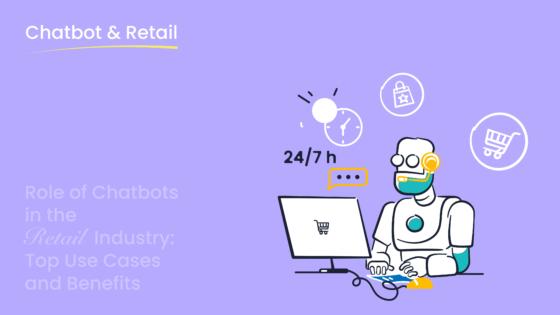
Retail and e-commerce businesses thrive on efficiency and customer satisfaction. Sobot’s AI Chatbot has become a game-changer in this space. By automating repetitive tasks, it reduces response times and improves service quality. For instance, businesses using Sobot’s chatbot have seen a 20% drop in inbound inquiries over two years. This means your team can focus on more strategic tasks while the chatbot handles routine queries.
The chatbot doesn’t just stop at efficiency. It boosts conversions by analyzing shopper behavior and engaging them with personalized recommendations. Imagine a customer browsing your online store. The chatbot can suggest products based on their preferences, increasing the likelihood of a purchase. This approach has led to a 96% positive feedback rate among users.
Here’s a quick look at the impact of Sobot’s AI Chatbot:
| Improvement Type | Description |
|---|---|
| Efficiency Improvement | Faster responses and better service grading. |
| Conversion Boost | Personalized engagement enhances loyalty. |
| Inbound Volume Reduction | 20% fewer inquiries over two years. |
| Positive Feedback Increase | Over 96% positive feedback from users. |
| Knowledge Management Improvement | 70% less manual maintenance through AI learning. |
Sobot’s chatbot ensures your customers get the support they need, when they need it, while driving your business growth.
Virtual Agents in Financial Services and Healthcare
Virtual agents are transforming industries like finance and healthcare by delivering smarter, more personalized interactions. In financial services, 46% of institutions using AI report improved customer experiences. These agents handle complex queries, such as loan applications or investment advice, with ease. They also help reduce costs by automating routine tasks.
In healthcare, virtual agents are equally impactful. Over 70% of patients believe AI can revolutionize care delivery. These agents assist with tasks like scheduling appointments, providing treatment information, and even offering mental health support. For example, 19% of patients use AI to learn about medical conditions, while 16% rely on it to understand treatments. The reliability of these interactions is high, with 69% of users rating the information as very or extremely reliable.
Key stats from these sectors include:
- Financial institutions invested $35 billion in AI in 2023, with projections reaching $97 billion by 2027.
- 75% of leading healthcare companies are scaling generative AI to enhance patient care.
Virtual agents not only improve efficiency but also build trust by offering accurate and timely support.
OPPO’s Success with Sobot’s AI Solutions
OPPO, a global leader in smart devices, partnered with Sobot to tackle rising customer inquiries during peak shopping periods. By integrating Sobot’s chatbot and ticketing system, OPPO achieved remarkable results. The chatbot resolved 83% of queries without human intervention, while the ticketing system streamlined complex issues for human agents.
Sobot also helped OPPO optimize its knowledge base, reducing manual maintenance by 90%. This allowed the company to provide faster, more accurate responses. The results speak for themselves: a 94% positive feedback rate and a 57% increase in repurchase rates. These achievements highlight how Sobot’s AI solutions can transform customer service.
Fun Fact: OPPO’s integration of Sobot’s solutions also improved global data accessibility, ensuring seamless support across 60+ countries.
Sobot’s partnership with OPPO showcases the power of AI in enhancing customer satisfaction and operational efficiency.
The Future of Customer Experience with Chatbots and Virtual Agents
How Chatbots and Virtual Agents Will Coexist in 2025
By 2025, chatbots and virtual agents will work hand-in-hand to redefine customer service. Chatbots will handle repetitive tasks like answering FAQs or providing order updates, while virtual agents will step in for more complex, context-driven interactions. This collaboration ensures efficiency without compromising the quality of customer interactions.
Here’s what the future holds:
- Chatbots will become integral to marketing strategies, enhancing customer engagement and satisfaction.
- Businesses using chatbots have already reported satisfaction scores increasing by up to 70%.
- AI will manage repetitive tasks, freeing human agents to focus on intricate issues.
- Generative AI will enable virtual agents to deliver tailored responses based on past interactions.
This coexistence will create a seamless support system, blending automation with human-like intelligence. For example, Sobot’s AI solutions already integrate chatbots and virtual agents, ensuring businesses can provide consistent, high-quality support across all channels.
The Role of AI Advancements in Shaping Customer Interactions
AI advancements are revolutionizing how businesses interact with customers. Technologies like voice analytics and predictive analytics are enabling real-time insights, helping businesses anticipate customer needs and respond proactively.
| Technology | Description |
|---|---|
| Voice Analytics | Extracts insights from call recordings, identifying keywords and sentiment. |
| Sentiment Analysis | Assesses emotional tone in interactions, helping businesses understand customer feelings. |
| Predictive Analytics | Uses historical data to predict future behavior, enabling proactive service. |
| Personalization | Machine learning tailors experiences to individual preferences, boosting engagement. |
For instance, Sobot’s AI-powered chatbots use real-time analytics to provide instant, accurate responses. This not only improves customer satisfaction but also enhances operational efficiency. As AI continues to evolve, expect even more personalized and meaningful interactions.
Predictions for the Evolution of Customer Experiences
The future of AI in business will bring transformative changes to customer experiences. Here’s what you can expect:
- 67% of customers now demand personalized experiences, and AI will make this the norm.
- 77% of consumers believe valuing their time is critical for a great online experience.
- Accessibility will improve, ensuring seamless interactions across multiple channels.
Businesses that embrace AI for customer experience will gain a competitive edge. Sobot’s AI solutions, for example, already deliver personalized, consistent, and responsive support, setting the stage for the future of customer service. As AI continues to advance, it will redefine how businesses connect with their customers, making every interaction more engaging and efficient.
Chatbots and virtual agents each bring unique strengths to the table. Chatbots excel at handling simple, repetitive tasks quickly, while virtual agents shine in managing complex, context-aware interactions. Together, they create a seamless support system that enhances customer experiences by blending efficiency with personalization.
Both technologies share a common goal: improving customer satisfaction through innovation. By automating routine tasks and delivering tailored interactions, they free up your team to focus on what matters most—building meaningful connections with your customers.
Adopting AI-driven solutions like Sobot AI Chatbot can give your business a competitive edge. Start small by setting clear goals and experimenting with use cases. Equip your team with AI tools to enhance human interactions and maintain transparency with your customers. With the right approach, you’ll not only boost satisfaction but also future-proof your customer service strategy.
FAQ
What’s the main difference between a chatbot and a virtual agent?
Chatbots handle simple, repetitive tasks like answering FAQs. Virtual agents, on the other hand, use advanced AI to understand context and emotions, solving complex problems. For example, Sobot’s chatbot automates routine queries, while its virtual agents deliver personalized, context-aware interactions for a seamless customer experience.
Can chatbots and virtual agents work together?
Absolutely! Chatbots and virtual agents complement each other. Chatbots handle quick tasks, while virtual agents tackle complex issues. Sobot’s AI solutions integrate both, ensuring efficiency and personalization. This teamwork boosts customer satisfaction and streamlines operations, making it a win-win for businesses and customers alike.
How do chatbots improve customer experience?
Chatbots enhance customer experience by providing instant, 24/7 support. They reduce wait times, answer questions, and even assist with purchases. Sobot’s AI chatbot goes further with multilingual support and smart self-service, helping businesses save costs while keeping customers happy.
Are virtual agents secure for handling sensitive information?
Yes, virtual agents are designed with security in mind. Sobot’s AI solutions comply with GDPR, use data encryption, and offer continuous backups. This ensures your customers’ sensitive information stays safe while benefiting from advanced, AI-driven support.
How can I start using a chatbot or virtual agent for my business?
Getting started is easy! Sobot’s AI chatbot offers a no-coding-required setup, making it accessible for businesses of all sizes. Simply integrate it with your existing systems, and you’re ready to enhance customer interactions. Visit Sobot’s website to learn more.
See Also
Enhancing Customer Satisfaction Through Chatbot Integration
Tips for Selecting Optimal Chatbot Solutions
Transforming Support Services with AI Chat Agents
